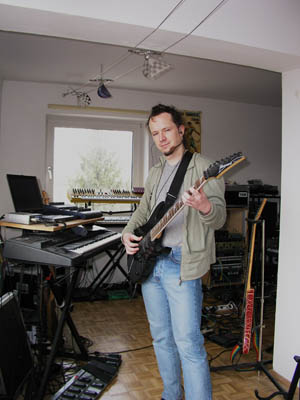Weird Specialists - The Making of
Thoughts on a Whimsical Creation by Rainer Thelonius Balthasar Straschill
Describing the creation of this album begins as early as the definition of my actual record release strategy for the near future (actually, until early 2010). There had been the idea of a looping-based solo album based on freely improvised material since about mid-2006, only it wasn’t entirely clear what it should contain: recordings from the Y2K6 Live Looping Festival exclusively (and thus also include some duet pieces), solo pieces as well as kybermusik recordings or only work done at home?
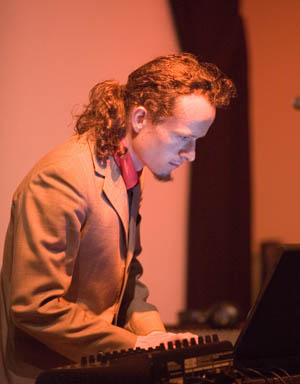
The choice of the solo tunes from live performances was an easy one: as I had forgotten to record my September 2006 gig at Salon Erna and a lot of the performances from the relevant time span were ensemble (sometimes kybermusik) performances, the choice was limited to the San José and Santa Cruz main festival gigs – and from those two apperances, I had one very strong track each: “I left my Pants in San Francisco” and “The Streets”.
“I left my Pants in San Francisco” was by far the easiest track with regard to editing and mixing. While the track was a very clear and straightforward affair right from the start, the facts that I had recorded my all-new computer setup’s output direct to disc and displayed some tasteful choices with regard to sound engineering gave me pristine audio quality right to begin with.
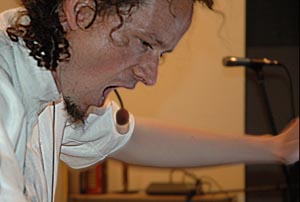
The case was trickier with “The Streets”. During that very gig, some of my setup started to act up – and the first problem was that the computer stopped recording the performances. This wasn’t a complete disaster as Krispen had recorded all of the performances directly from the board, however, noise from the board (and from unused open channels) degraded the quality somehow. What’s more, during the performance my computer misteriously hit CPU load redline a few times, this resulting in some audible crackle in the recording – so off to digital surgery. And thus, while “Pants” was only treated with some gentle mastering compressor and EQ, on “The Streets” the use of audio processing included noise reduction, multiband and fullrange compression, multiband transient shaping, EQ and sidechain compression – all that in addition to arduous editing of waveform segments to remove artifacts.

Perhaps the track with the most unusual history of creation on this release is the opener “Errico’s Grave” (named after Italian singer Errico “Enrico” Carruso). This track was taken from a recording of a kybermusik session together with Tony K, of which Tony has already published an edit. Now, how can a kybermusik recording make it onto a solo release you ask? The part which makes up “Errico’s Grave” was performed by me (in a moment of bravery going completely a capella) just after Tony had dropped out of the session due to connection problems.
Turning that longish and not only experimental, but also “mess-aroundal” recording into a coherent track took some editing and also the use of several of those effects which I call “creative effects” (like a step-modulated filter, as opposed to some decent reverb). And with that, one thing had become clear: on “Weird Specialist”, creative editing and effects use was not only allowed, but rather the norm.

This also was necessary if you look at the make of the source material: some seven hours of twotrack recordings. A lot of them contained lots of experiments with tools, some of them had already been edited (as the source to “People Who Annoy You” which during editing was left with an annoying fadein and fadeout), some of them mutilated in the process, some of them were not engineered very cleverly (like the huge dynamic squashing on “Fook Yew” – together with those loads of instruments layered there, it’s a miracle that it’s not just white noise). There was work to do.

“Combining inputs” is actually what the process for assembling the remaining tracks was all about. It quickly turned out that while there were some great musical ideas and great moments in some of these tracks, there wasn’t a single track that properly stood on its own as a complete song. In some cases, the beautiful parts were limited to a few seconds of trailing delays, whereas with other tunes, an otherwise nice track was just missing that double time section in the second half.
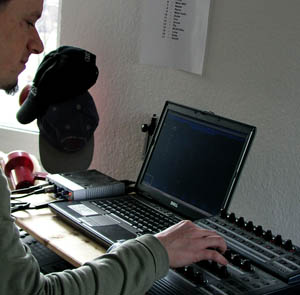
For that reason, all of the remaining three tracks were assembled from more than one input track. “Detlev on Drugs”, a groovy hiphop-turns-twostep-track, starts off with the slow groove of an almost instrumental hiphop tune (with just a tiny amount of vocals in a foreign language thrown in and a phone call arriving during the first guitar solo), before in the second part it morphs into a pushing double-time feel.
This second part is also the part where the interesting things happen. There’s use of the looper as a very long delay line, as well as doublespeed/reverse action going on. And as we were already in “massive editing is allowed” territory, it was an easy decision to allow for overdubs as well. There is a slide up and down the guitar neck in that second section and a drum fill that just hasn’t been there in the original version. Also note the use of several dub-style delay trails to make jumps into other sections of the original tracks more natural.
The album’s title track – actually, a suite in two parts – really does take that assembly editing to yet another level: contained is the input from ten different source tracks in total, some of them adding substantial content, others just adding noises (like the ones encountered in the intro to that track’s second part).
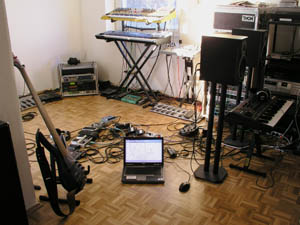
If we omit the festival tracks and the kybermusik selection for the following discussion, it may seem surprising that of the five tracks presented, none of them features the hardware-based performance setup (which was the only big performance setup up to early 2006). So even if the contents of the album were selected from a pool of recordings done in the time between early 2004 and end of 2007, it seems only tracks from the second part of this time span made it onto the release.
There are quite obvious reasons for that which don’t have anything to do with any “software is better than hardware" discussion. First, because the computer-based implementation features an integrated recording functionality, nearly everything I played (without just goofing around) got recorded and archived. For the hardware setup on the other hand, recording something meant connecting either a DAT recorder or setting up the computer to record this (and I have to admit that during the time in question, my setup wasn’t done in a way which made that easy). And resulting from that, you find a total of 32 tracks done with the software setup vs. a mere seven tracks done with the hardware setup.
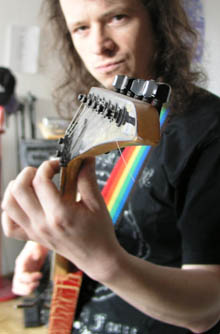
Now of course both setups sound different with regard to the sounds used and the audio engineering processes in place. This does come out most obviously with regard to the drum tracks. For that reason, it was clear that it wasn’t possible to combine inputs from the software and hardware setup into a single coherently sounding tune. So although no “hardware tracks” are represented on Weird Specialist, this is not meant as a statement on the quality of hardware vs. software solutions.
When work on the patchwork tracks had been completed, it came to use the gained freedom regarding overdubs on “Fook Yew” and later “People Who Annoy You”. “Fook Yew” was one of those edits that started with a most annoying fadein (which didn’t fit into that radical break concept I wanted to get by having it right after “Errico’s Grave”), and worse still, “People Who Annoy You" had both a fadein and a fadeout.
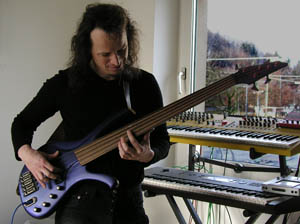
“Fook Yew” then had its fadein removed or rather replaced by a “grunt” vocal track, a drum intro (here trying to make the drum sound stick close to that of the actual track) and a tiny bass guitar intro. While we were at it, it was also possible to programm crash cymbals into the track. To make go of the fadein in “People Who Annoy” you, I decided to let it trail directly on “Fook Yew”. For that, yet again another dub delay (with a rate shift to roughly half time) plus a percussion bridge was used.
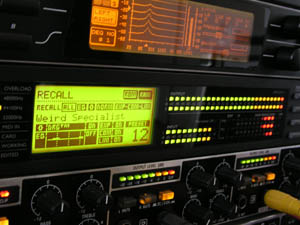
With all the editing and mixdown finished, it was time to think about premastering. Some tricky task here, because as I mentioned those tracks came from some different sources, and to give a somewhat coherent sonic picture, transient shapers, multiband compression, controlled Eqs and the rest of that lot of sonic processors was let loose. It is also worth a mention that even during that part of the work on the album (we’re now late in December), the track list still got reordered and even two tracks (“Piepsmaus” and “Sick like a Motherfucker”) got dropped completely.

Finally, another editing choice had to do with the fact of online publishing: when people play stuff in their MP3 players, including tracks that directly segue into each other is somewhat tricky. In most cases, the player applications either add a short pause or do some tiny crossfade, both ways ruining a cleverly arranged intersection. For that reason, the tracks “Fook Yew” and “People Who Annoy You”, which are separate tracks on the CD, are included as one track on the jamendo release.
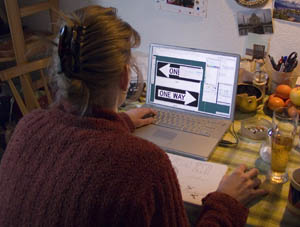
While discussions on cover art had been going on for some months (I believe I first asked Anna late in July whether she would agree to do this), it turned out the same as it did in 2001 for work on the SAUBER! album: the cover art (like the web pages) only took really shape on the very last day, on this day of publication. The cover turned out a strange “minimalism meets iconography” way of art, much different from Anna’s SAUBER! work and more resembling covers like JANUS or even groxis tafelbilder, but without looking similar to any of those.
Finally, after four years of recording tracks and a few months of intense creative editing, the album is finished. And it’s interesting to see that it came out quite differently from what I had first thought it would sound like. This is because the vast majority of tracks are beat-based and/or singer-songwriter-style, the sole exception being the opener “Errico’s Grave”. And with that, it looks like 2007 was a year of “dancefloor releases” for me after all.
Berlin, 31st of December 2007
Rainer Straschill
